If you are experiencing an ache or pain that is persistent, you want to see a medical professional to determine your treatment plan. In the state of Maryland, you can see a physical therapist without seeing a physician first. If you choose to do this, a physical therapist will perform an evaluation to determine your plan of care. If a physical therapist feels seeing a physician is necessary based on your evaluation, it will be recommended. This is the same for an MRI. If you see a physical therapist first, we are unable to prescribe imaging but we will recommend you see a physician to ultimately get imaging. Most people go through a round of conservative treatment, such as physical therapy prior to receiving an MRI. An MRI is recommended when physical therapy is not improving symptoms or you are hitting a plateau with improvement. Most insurance companies will not approve paying for an MRI without the patient having physical therapy first. If you are unsure of what you need to do for the next step in your treatment plan, make sure to make an appointment with a physician or physical therapists to help guide you.
Year: 2022
Why Does my Back Hurt?
Many patients come to physical therapy with back pain. They come in asking the question, “why does my back hurt?” Well, the answer is not the same for everyone. A physical therapist has to perform a thorough evaluation to determine the cause of the patient’s back pain. The evaluation consists of finding out specific details from the patient about their back pain. This leads the therapist into a specific evaluation of the patient’s range of motion, strength, flexibility, and stability. Typically back pain comes from a lack of mobility, strength, and flexibility. For some patients, it is more of a decrease in flexibility, for others because of strength deficits, and some folks it is a combination of both. Once this is determined, your therapist will develop a plan of care to improve upon the deficits found during your evaluation. On average, it takes 4-6 weeks of consistent physical therapy to achieve the ultimate goal of decreased pain and improved function. The key as a patient is to be patient and stick with the plan. If after a month of physical therapy you do not notice any improvements, make sure to speak with your physical therapist to determine the appropriate continued treatment plan.
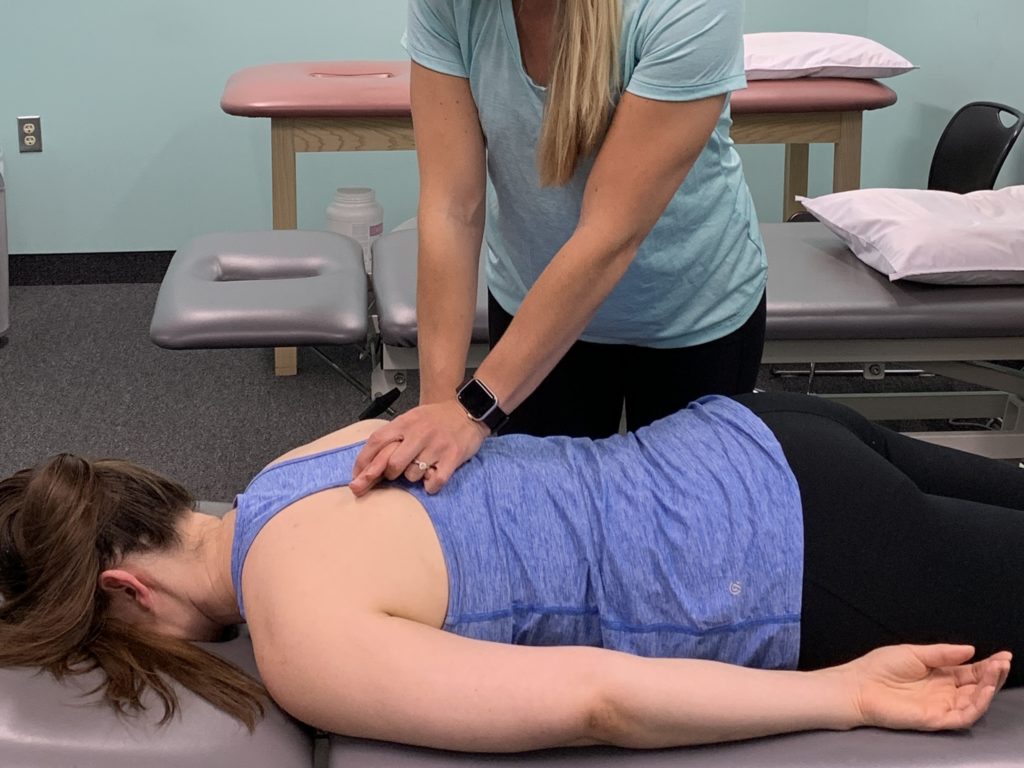
Ergonomic Tips for Working from Home
If you find yourself working from home more than you normally would, you should consider these tips to avoid an onset of neck, back, or wrist pain.
- Choose the correct workspace – Avoid sitting on a sofa or bed while getting your work done. Instead, you should find a chair that has good low back support and a table or desk that you can place your laptop on.
- Maintain correct posture
- Try to sit with your feet flat on the floor instead of letting them dangle.
- Place your laptop so that the top of the screen is at eye level to avoid straining your neck.
- Try to avoid slouching over the computer by keeping your shoulders pinched back as you work or using your chair’s back support.
- Your forearms should be able to rest lightly on your armrests and desk and your wrists should stay in a neutral position.
- Take frequent breaks – Stand up and walk around for a few minutes at least once an hour at a minimum. If you can avoid staying in one position for too long, it can help to decrease any stiffness you may feel throughout the day.
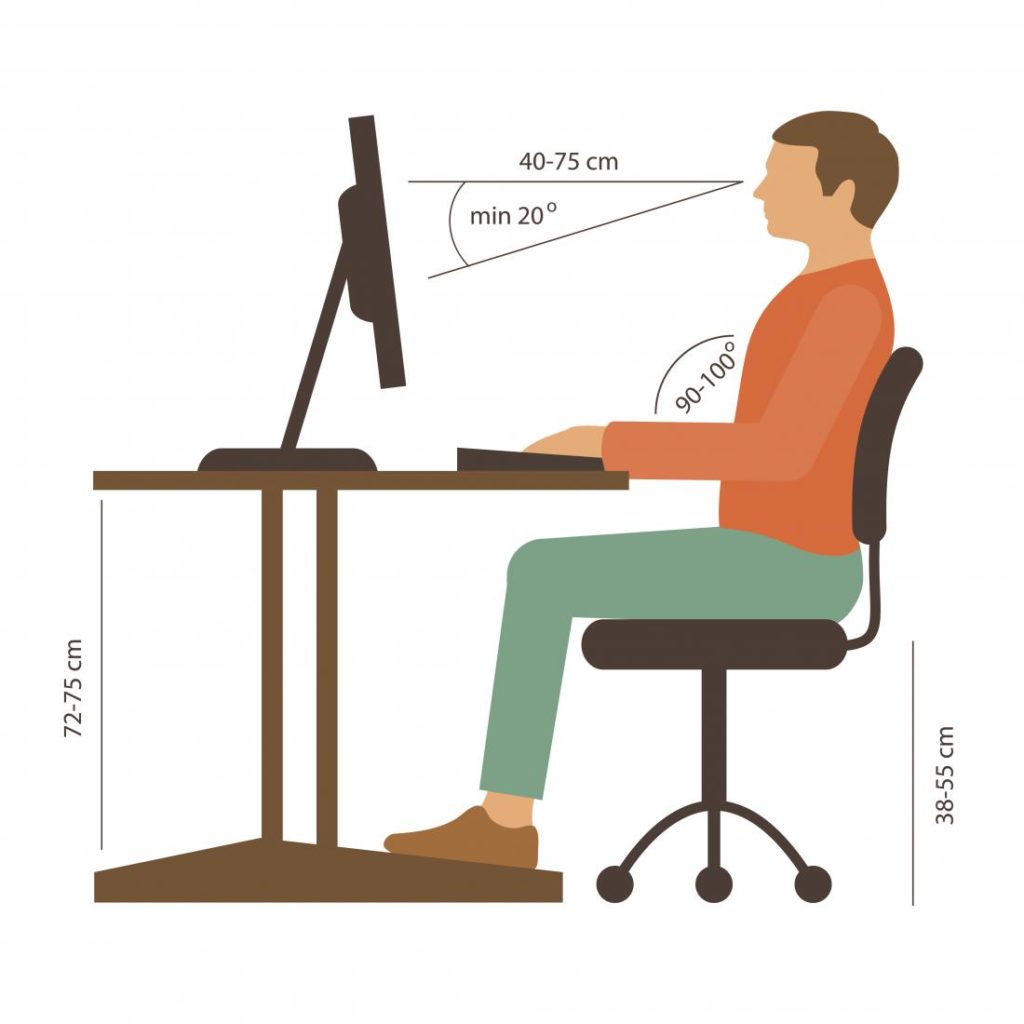
How to Make Exercising Fun!
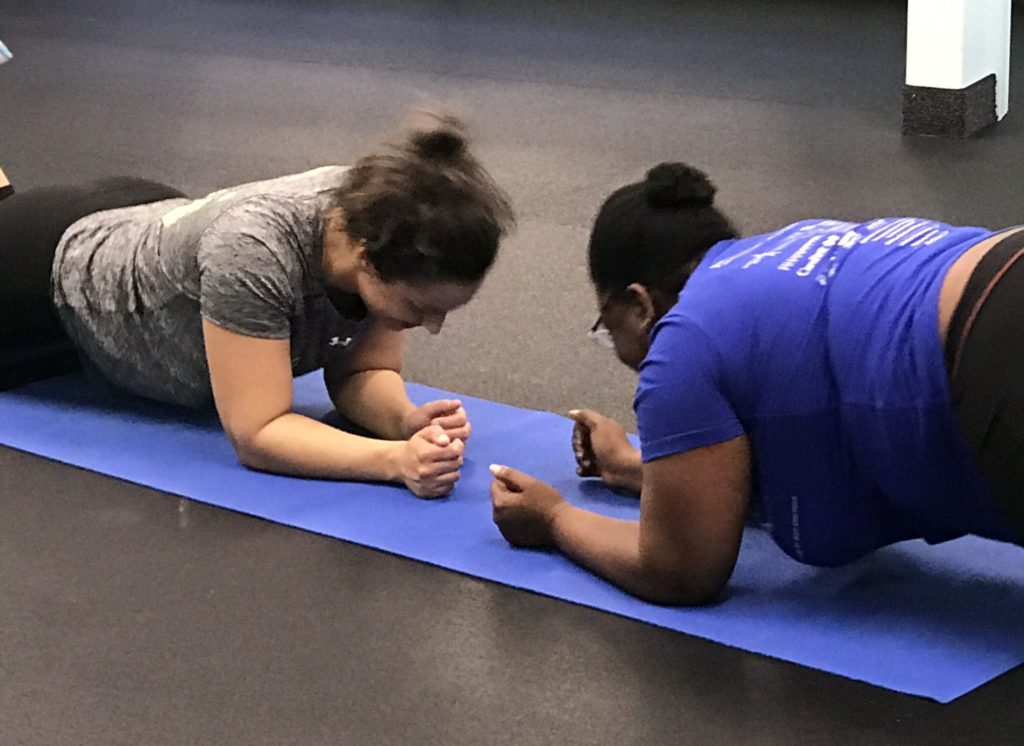
We all know that regular physical activity is an important part of staying healthy, but committing to a regular exercise routine isn’t always easy to do- in fact, sometimes it can seem quite daunting. But it doesn’t have to be! You are more likely to stick to an exercise routine if you enjoy what you are doing and if it is easily accessible/attainable. Check out and explore your options and find something that works for you so exercise becomes part of your everyday life! Below are some ideas on how to make exercise more enjoyable:
- Make a game out of it
- Deck of Cards – in this game you turn a 52 card deck into a workout. Take out the Jokers and come up with one exercise for each suit and then shuffle the deck and place it face down. Pick up one card at a time and perform the exercise for that suit for the amount of repetitions designated by the number on the card (*all face cards equal 10 repetitions)
- Variations can include making the 4 exercises all lower body focused, upper body focused, core focused, etc.
- Progressions can involve timing yourself and trying to “beat the clock” the next time you perform that set of exercises. Or you can choose more complex exercises to perform.
- Exercise Roulette – for this game, you write down various exercises on individual pieces of paper, fold them in half and toss them in a box/hat/bowl/etc. Once you decide how many exercises to do, you choose that many from the box and to create your workout. Then, you choose how many sets and the duration. A sample workout could be to pick 5 exercises and perform each for 50 seconds with a 10 second rest between each and then repeat that circuit 3 times.
- Variations can be similar to those listed in the Deck of Cards explanation.
- Progressions can involve increasing your “on” time, decreasing your “off” time, or just choosing more exercises to complete.
- Deck of Cards – in this game you turn a 52 card deck into a workout. Take out the Jokers and come up with one exercise for each suit and then shuffle the deck and place it face down. Pick up one card at a time and perform the exercise for that suit for the amount of repetitions designated by the number on the card (*all face cards equal 10 repetitions)
- Find a class
- In Person – Gyms, fitness centers, and sporting goods stores everywhere provide a wide variety of classes for people of all ages and fitness levels. If you belong to a gym, explore the classes they offer and see if one is a good fit for you. If you don’t belong to a gym, do your research to see what is available in your area (and keep an eye out for programs that may offer a free first lesson or a certain amount of classes at a discount).
- Virtual – Since the pandemic, virtual workout classes have been on the rise. You can find practically any kind of exercise/workout class online now and some fitness centers/gyms even have virtual access to lessons. Take some time and browse the web for what might interest you, and be sure to look at all different channels/accounts to see what instructor(s) work best for you.
- Meet with a friend/group
- If you don’t feel comfortable going to a group class for whatever reasons, try meeting up with a friend or two to exercise. This will help pass the time and keep you accountable.
Written by: Dr. Taylor Ryan
Why Should I Strengthen my Core?
Your core muscles are important for strength, balance, and overall function. Having a strong core helps to decrease the likelihood of developing back pain due to muscle compensation. There are many core exercises that can be performed in a variety of positions. You can even contract your core while performing any exercise of your choice to make the exercise into a core strengthening exercises.
Here is a core strengthening exercise you can perform anywhere to strengthen your core muscles.
- Assume a push-up position but bend your arms at your elbows so your weight rests on your forearms.
- Tighten your abs, clench your glutes and keep your body straight from head to heels.
- Start by holding the exercise for 10 seconds and build from there.
Make sure you are breathing while performing this exercise.
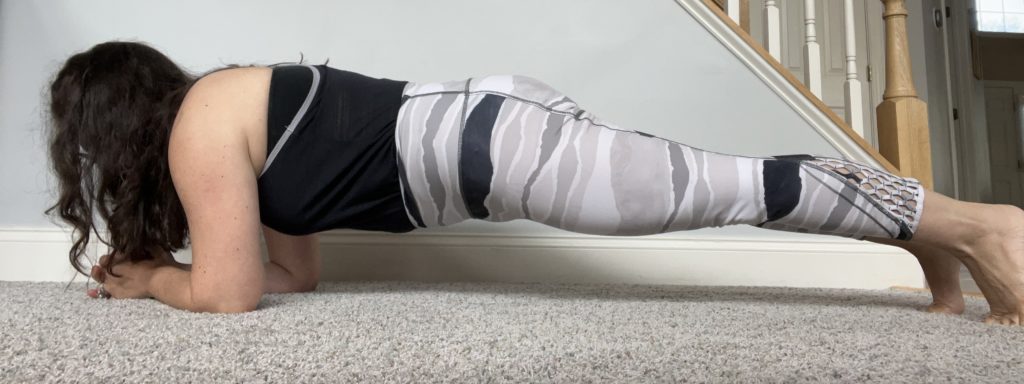
Tracking Your Heart Rate With Exercise
During exercise you can track how hard you are working by your heart rate. Find your maximum heart rate by using the equation 220- your age.
For moderate intensity exercise, aim for a heart rate of 64%-76% of your maximum heart rate.
For high intensity exercise, aim for a heart rate of 77%-93% of your maximum heart rate.
If you perform the same cardiovascular exercise at the same intensity and time frame, as you track your heart rate you will notice it will not get as high overtime. This is because your cardiovascular fitness is improving. You want to progress your exercise every approximate week to continue to challenge yourself and improve your cardiovascular fitness.
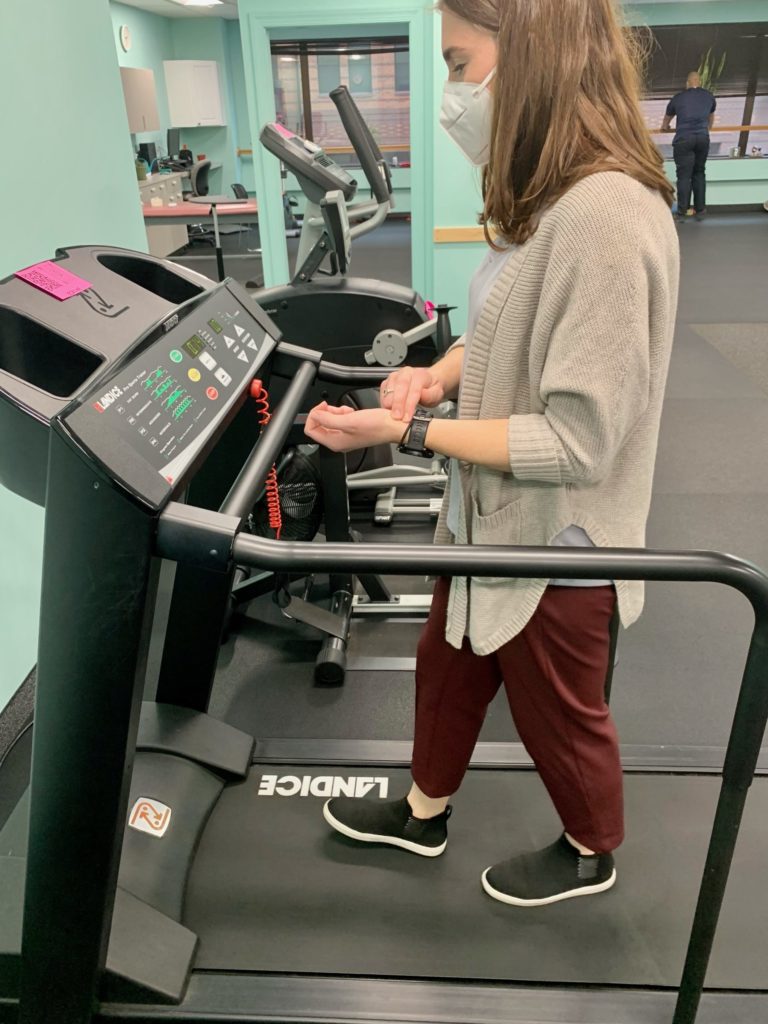
Stair Negotiation Physics
Many people with pain in the front of their knee comment that going down stairs is more challenging and painful than going up. Let’s take a quick look at why that is!
In the images below, Dr. Scott compares the forces at work when going up vs. down a step. The yellow arrow indicates the force of gravity and the green arrow is the force placed through the kneecap. A larger arrow = greater force, and as you can see the higher degree of knee bend when going down creates a higher force, and thus more stress, on the knee. This can cause increased pain and make descending steps quite challenging for those with a painful knee condition.
Written by Dr. Scott Newberry
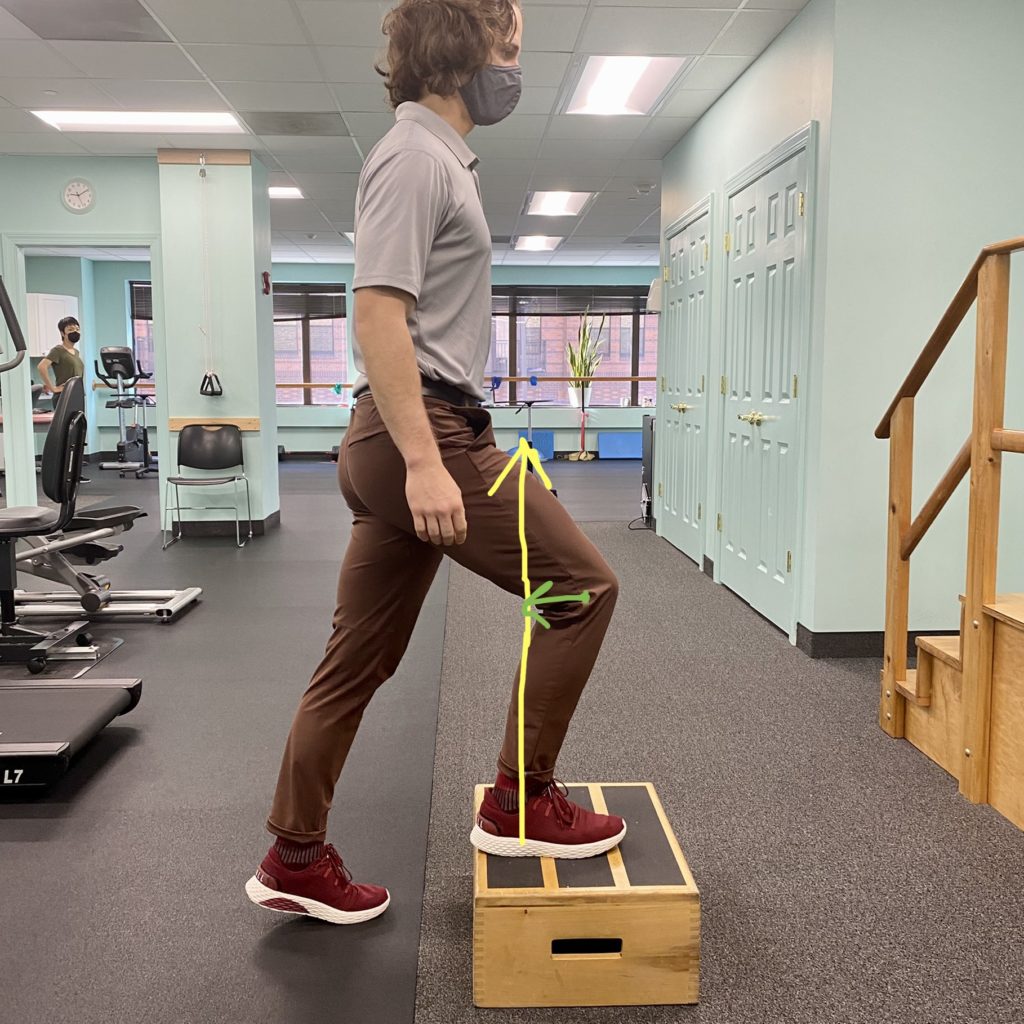
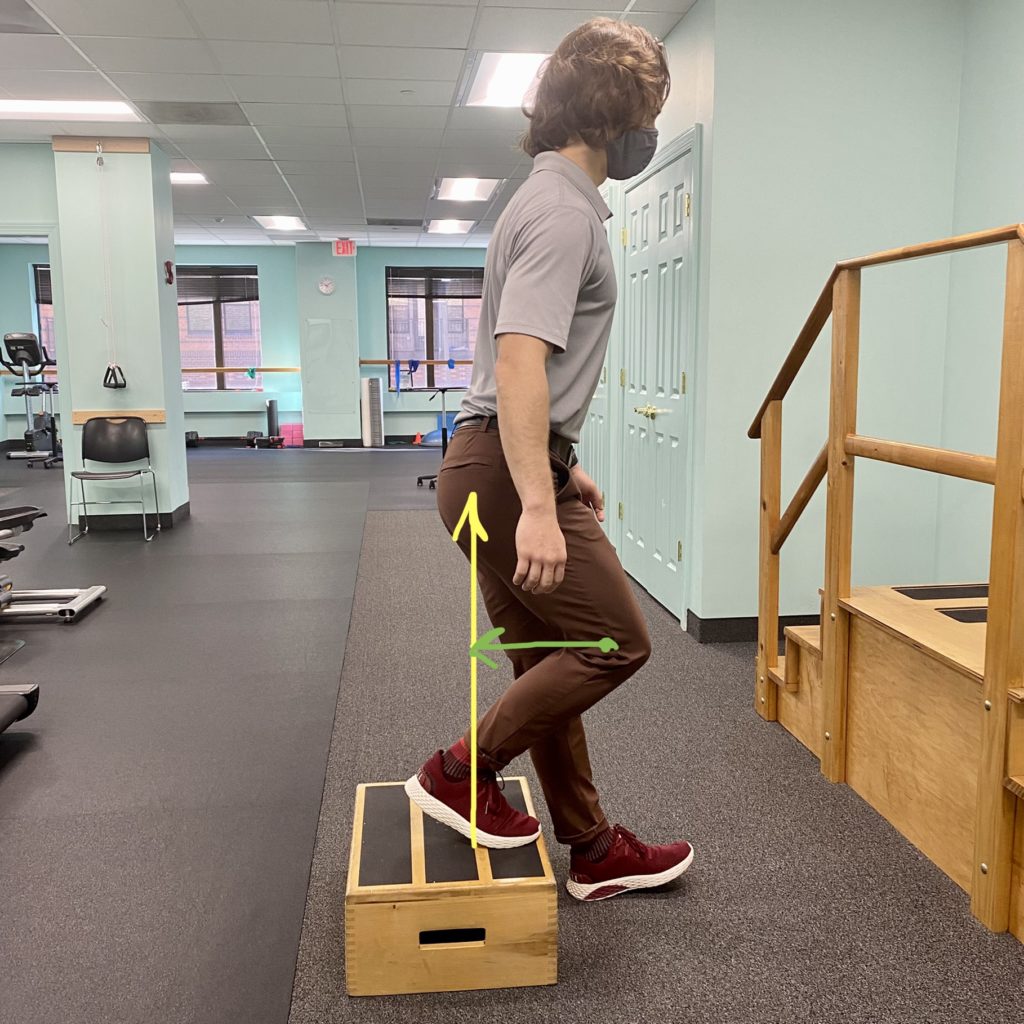
Is Muscle Soreness Normal After Exercise?
The answer is YES! Muscle soreness after exercise is called DOMS (delayed onset muscle soreness). This happens when you exercise a muscle that has not been used stressfully in awhile. The soreness results from tearing and or stress on the muscle fibers and as the body repairs these small tears your muscles become stronger. After exercise, you will normally feel muscle soreness anywhere from 24 to 72 hours after the activity. The intensity of the muscle soreness you experience will depend on how intense your workout was and if that muscle group has experienced a workout before of this variety/intensity.
If your symptoms of muscle soreness linger longer than 72 hours and either get worse or stay the same, then you want to consult with a medical professional. The reason for this is your exercise possibly caused a muscle strain, ligamentous sprain, or injury.
How To Make Consistent Exercise Goals That Stick
With the new year upon us, everyone is setting out to start on those New Year’s Resolutions. Every year, exercise and practicing healthier habits are always in the top few resolutions and so we at Harbor PT want to give you some tips on how to make those resolutions into habits and help you create a healthier and happier life!
1. Set realistic goals – while the goal of going to the gym 7 days a week sounds great, it is best to be honest with yourself and set goals based on your daily schedule and current fitness/health level. Setting too lofty of a goal can sometimes become overwhelming and lead to discouragement or can lead to injury.
2. Join a class- finding a form of exercise that works for you is important and joining a class can make exercise fun, hold you accountable, and teach you safe exercise habits all while being in a group of people with similar interests and goals.
3. Have a fitness buddy- setting fitness/health goals with a friend can make working toward your goals less intimidating and more enjoyable and make you more accountable. You don’t necessarily have to make the same exact goals, but even working toward similar goals as a team can help make the process more effective and enjoyable.
4. Start small- you can set a big goal for yourself, but as stated above, it is important to be realistic and to be honest while setting your goals. If you want to set that big goal, try breaking down that goal into smaller milestones; this will help keep you motivated while making progress.
5. Don’t be afraid to ask for help- starting something new is exciting but it can also be a little intimidating. But there are always people around to help you reach your goals. Whether that be a friend to help motivate you, a dietician to help you make smart choices in changing your nutrition, a personal trainer to help ensure safe exercise, or a physical therapist to help address a current/chronic injury so that you can continue exercising safely, there is always help available, so use it to your advantage.
Written by: Dr. Taylor Ryan, staff physical therapist at HPT
